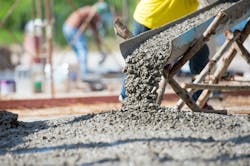According to a 2018 report from Chatham House, over 4 billion metric tons of cement are produced annually. This, the policy institute said, accounts “for around eight percent of global CO2 emissions.” Because of this, efforts are being made to develop new techniques and processes to reduce the environmental effects of our reliance on concrete.
One partnership between Boral, an Australian firm that specialized is building and construction materials, and the University of Technology Sydney, aims to develop “novel, interesting, and sustainable building materials,” according to an article by CNBC. These include Netherlands-based StoneCycling. The firm says its “WasteBasedBricks” produced from a minimum of 60 percent waste, and suitable for interiors and exteriors.
In the U.K., the DB Group has developed Cemfree, which is described as a “totally cement-free alternative to conventional concrete.” To date, the material has been used in a number of settings, including part of the M25, a major motorway in the south of England.
Kenoteq, a state-up spun out from research at Heriot-Watt University, Edinburgh, have developed brick produced from “90 percent recycled construction and demolition waste.” The “k-briq” could be a combination of things such as gravel, plasterboard, and bricks.
The article reports that this shift within the industry is likely necessary. Instead of exploiting natural resources and using large volumes of carbon emissions, sustainable options are more viable choices.
Source: CNBC





